Thrace Odessus Coin 16.67g
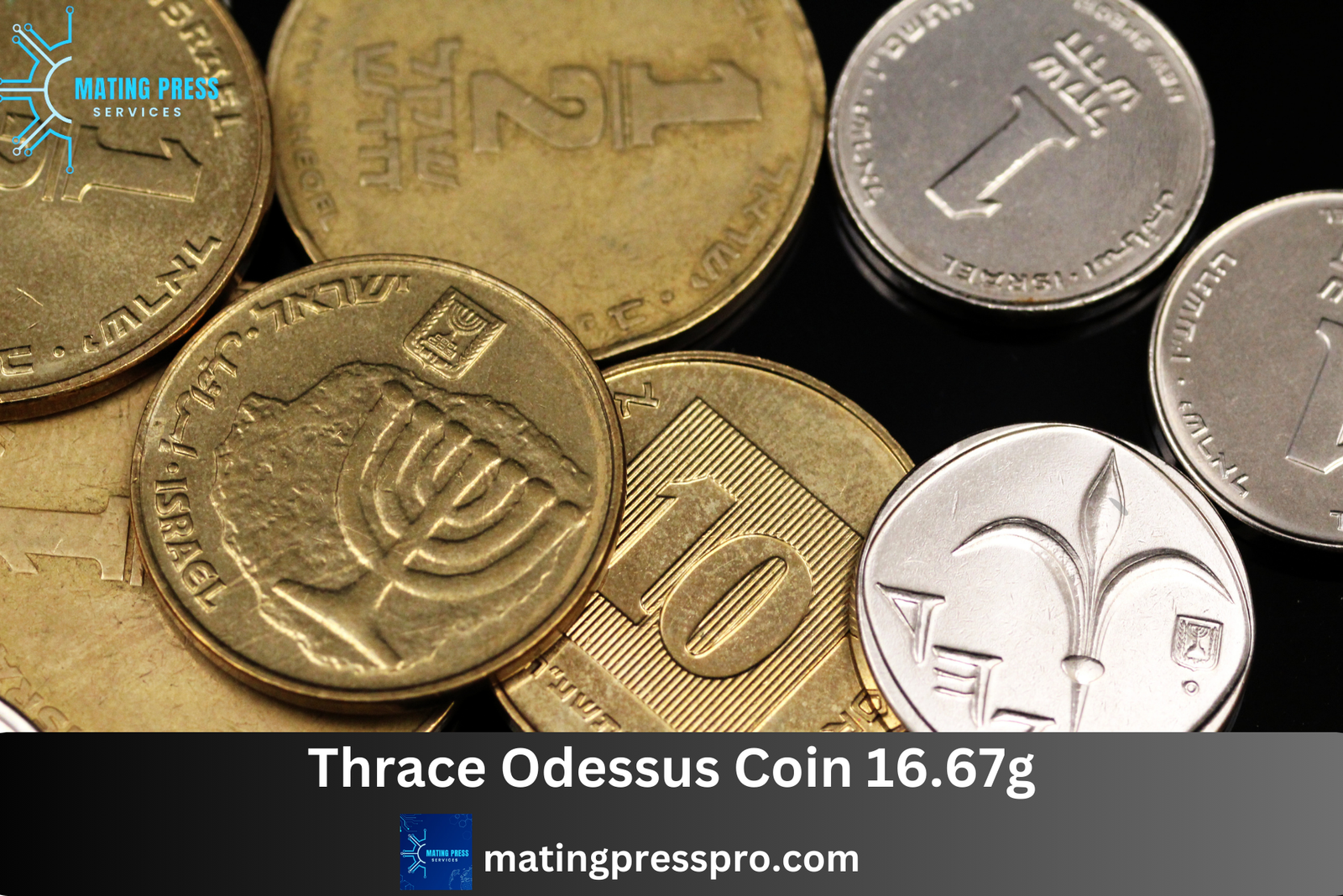
The Thrace Odessus Coin 16.67g is an intriguing artifact of ancient Thrace, capturing the rich cultural and economic history of the ancient city of Odessus, a major port in the region. This coin is not only a testament to the economic influence and cultural exchange in ancient Thrace but also a remarkable piece for collectors and historians today. Known for its distinctive weight of 16.67 grams, this coin reflects the artistic mastery of ancient engravers and the historical significance of Odessus in trade and diplomacy.
By exploring the origins, iconography, and economic importance of the Thrace Odessus Coin 16.67g, we can gain deeper insights into its enduring appeal and the values it represented in ancient times. This detailed analysis of the coin’s unique features and cultural relevance reveals why the Thrace Odessus Coin is so cherished in both numismatic and historical circles.
Information
The Thrace Odessus coin 16.67g is certainly not currency, but a holder of some historical and cultural aspects of that said region. This coin was minted in the 5th century BCE and belonged to the dynamic trade networks prized by old Thrace. The coin weighed around 16.67 grams, which would have a lot of significance when it came to commerce and trading goods and services. Replete with intricate designs that feature local deities and symbols, this coin is a work of art from its time period.
The Historical Context of Thrace
Thrace: In terms of being a melting pot of cultures and influences, Thrace would refer to a region in the southeastern parts of Europe. The city of Odessus was inhabited by the Thracians, known for fierce warriors and rich traditions. City Odessus is one of the grand urban centers of trade and contact with other regions. In itself, it is the history of the Thrace Odessus coin 16.67g, which connects us to this ancient civilization. Understanding the historical background of the Thracians makes us realize how important their coinage was in the economy back then.
The Artistry of the Coin
The Thrace Odessus coin 16.67g is one beautiful example of the minting techniques of the ancient times. It often presents very intricate local deity, animal, or prosperity symbols on it. This workmanship is proof of the artisan skills of the old era. The coin is aesthetic, reflecting the cultural values of the people, where the idea held much to the connection of the people to the gods and the commerce in which they are practicing. The coin for its artistic aspects is celebrated by collectors as well as historians, given its historical value.
Economic Significance
Weight of the Thrace Odessus coin 16.67g depicts its heavy nature, useful for activity in the early economy. The use of coins as a medium of exchange sets pace to trade between different groups of people. This coin connected Odessus to all the other economic centers in the region through everyday transactions and long-distance trade. Its usage in commerce is a sign that a well-complex economic system is being developed in Thrace. A coin may seem to have little extrinsic value beyond its purchase power; however, its aesthetic value or art gives it a place of importance in the network of ancient economic, political, and social relations.
Collecting Ancient Coins
For any numismatist, the Thrace Odessus coin 16.67g is an acquisition they highly cherish. Collectors are in love with the coin not only because of the historical context but also because of its beauty. The purchase of such coins requires knowledge about whether they are genuine or not and the market value, making the pursuit of collecting both challenging and rewarding. The urge to have a piece of history propels collectors to pursue ancient coins like the Thrace Odessus. With this increased interest in ancient coins, there only is more value to such relics.
Modern Implications and Legacy
The Thrace Odessus coin 16.67g has a living legacy that extends all the way into contemporary thought regarding ancient economics. The modern historians and scholars use these coins to understand the patterns of trades, cultural exchange, and social entities that may have existed there and that went on to influence the previous civilization. This coin also marks the paramount role that ancient civilisations’ interaction with one another played during their course of evolution; it underlines the importance of trade in the formation of cultural identity. This study of such artifacts is actually helping to learn about the intricacies of human history and the indelible impressions old practices continue to have on modern society.
Historical Significance of the Thrace Odessus Coin 16.67g
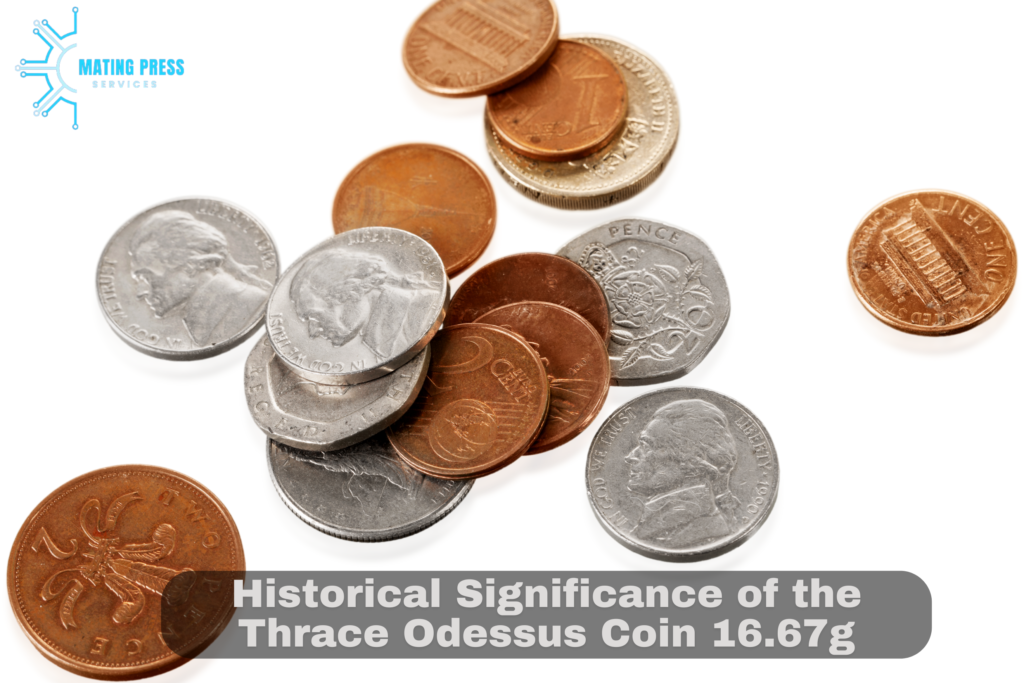
Ancient Thrace: A Center of Culture and Conflict
Located in what is now parts of modern-day Bulgaria, Greece, and Turkey, ancient Thrace was a strategically significant region influenced by multiple civilizations, including the Greeks, Persians, and Romans. Known for its fierce warriors and rich cultural heritage, Thrace was a land of both internal conflict and vibrant cultural exchange. The Thrace Odessus Coin 16.67g is a product of this historical milieu, reflecting the city of Odessus’s unique position as a bridge between various cultural influences.
Odessus: An Economic and Cultural Hub
The ancient city of Odessus (modern Varna, Bulgaria), founded by Greek colonists around the 6th century BCE, emerged as a prominent trade center along the Black Sea coast. With a thriving port and access to both Greek and Thracian resources, Odessus grew into a prosperous city, issuing its own coins as a symbol of its economic power. The Thrace Odessus Coin 16.67g embodies the wealth and sophistication of Odessus, serving as a practical tool for trade and a representation of the city’s cultural heritage.
Physical Attributes of the Thrace Odessus Coin 16.67g
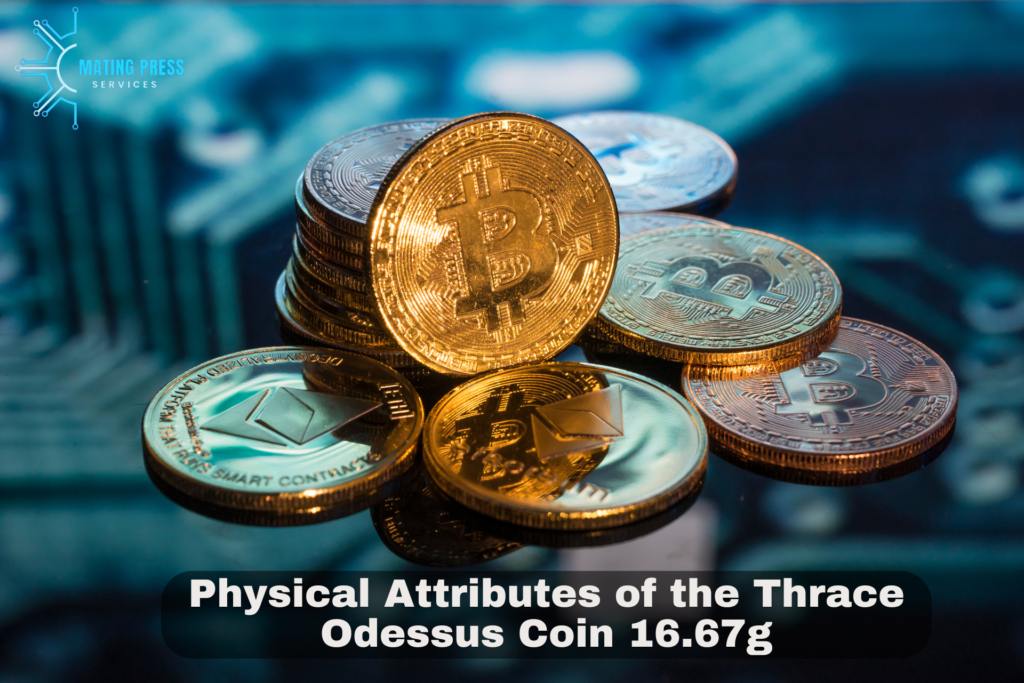
Material and Weight
Crafted from silver, the Thrace Odessus Coin 16.67g highlights the importance of precious metals in ancient currency systems. Silver coins were valued for their durability and stable worth, and the coin’s weight of precisely 16.67 grams ensured consistency in trade. This weight standard not only provided a trusted measure for local transactions but also allowed for its use in trade with neighboring Greek and Thracian communities.
Design and Craftsmanship
The minting process in Odessus involved skilled engravers who meticulously crafted each die used to stamp the coins, creating consistent and recognizable designs. Each Thrace Odessus Coin 16.67g served as a canvas, showcasing the city’s artistic capabilities and offering a glimpse into the cultural priorities of the people of Odessus. The details and engravings on these coins set them apart, demonstrating a blend of Greek artistic influence and unique Thracian motifs.
Iconography and Symbolism on the Thrace Odessus Coin 16.67g
Obverse: Portraits of Deities and Rulers
The obverse of the Thrace Odessus Coin 16.67g often features depictions of gods or rulers, lending the coin a powerful, authoritative symbolism. Common motifs include Athena or Apollo, emblematic of wisdom, strength, and beauty. Athena’s presence on the coin represents protection and strategic power, underscoring the value placed on these virtues by the people of Odessus. By incorporating these figures, the coin not only linked Odessus to the Greek world but also reinforced the city’s aspirations for longevity and protection under divine favor.
See also Abaxx Pilot Program
In some examples of the Thrace Odessus Coin 16.67g, rulers of Thracian or Greek origin are depicted, establishing the leadership’s credibility and honoring their legacy. These coins likely circulated as symbols of allegiance to the ruling class and communicated Odessus’s political affiliations to other city-states and regions.
Reverse: Thracian Symbols and Local Animals
The reverse side of the Thrace Odessus Coin 16.67g commonly portrays symbols of local significance, such as lions, horses, or agricultural motifs. These animals represented qualities like strength, agility, and prosperity. For example, the lion symbolizes power and courage, reinforcing the resilience of Odessus. Horses, often associated with both Thracian and Greek culture, reflected the region’s equestrian traditions and the high value placed on strength and speed in both military and economic spheres.
These images served to communicate the city’s identity and values, linking the Thrace Odessus Coin 16.67g to the natural and cultural landscape of Thrace. The reverse iconography thus strengthened Odessus’s image as a stable, prosperous city rooted in tradition.
Economic Importance of the Thrace Odessus Coin 16.67g
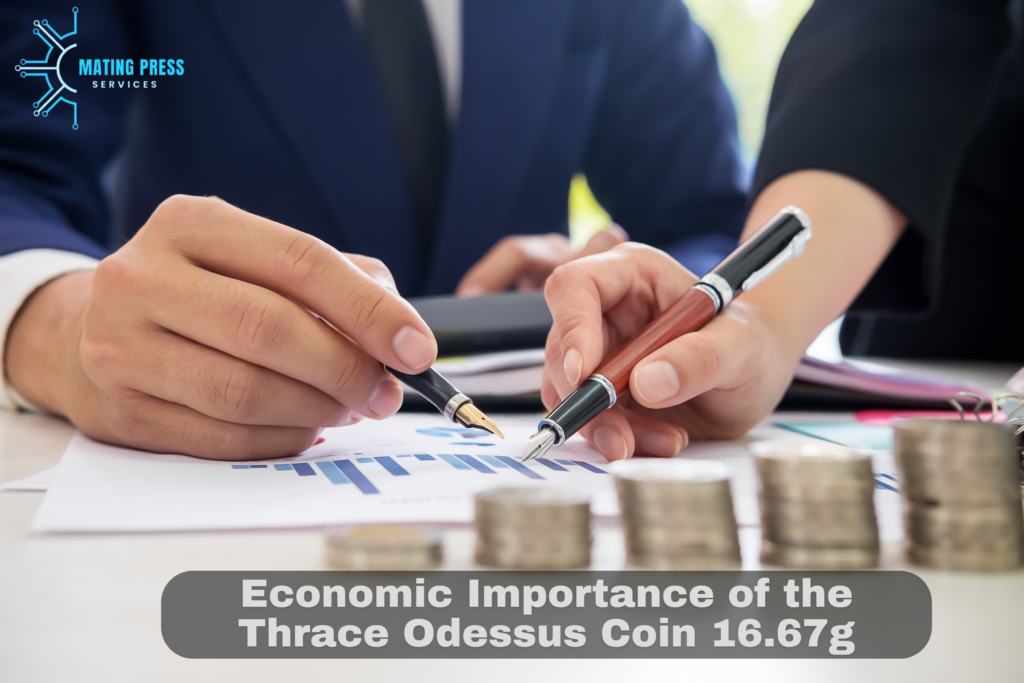
Role in Trade and Market Transactions
The Thrace Odessus Coin 16.67g played a crucial role in the ancient Black Sea trade network, a commercial landscape connecting Odessus with Greek, Thracian, and even Persian markets. Merchants used the coin in exchanges involving goods like grain, wine, metals, textiles, and olive oil, contributing to the economic stability of the city. Due to its consistent weight of 16.67 grams, the coin served as a reliable currency, which boosted confidence in its use across multiple trade routes.
Trust in Standardized Currency
In a period where standardization of currency was essential for establishing trust among trading partners, the Thrace Odessus Coin 16.67g met this need. The reliable silver weight allowed for smooth transactions without the need for constant testing or validation, which streamlined trade activities. By using a coin of consistent weight and recognizable design, Odessus was able to foster a sense of economic stability and credibility in its currency system.
Thrace Odessus Coin 16.67g: Cultural Exchange and Artistic Influence
Greek and Thracian Artistic Synthesis
The Thrace Odessus Coin 16.67g represents a convergence of Greek and Thracian artistic traditions, demonstrating the cultural interaction that characterized Odessus. Greek engraving techniques, known for their precision and lifelike qualities, influenced the craftsmanship of Odessus’s coins, resulting in detailed, high-relief designs. Meanwhile, Thracian symbols and motifs provided the coin with a distinctive local identity, blending both artistic traditions into a harmonious whole.
Legacy in Thracian Coinage
The artistic influence of the Thrace Odessus Coin 16.67g extended beyond Odessus, inspiring similar designs in neighboring Thracian cities that sought to develop their own numismatic styles. The successful blending of Greek and Thracian elements established a model for coinage that other regions adopted, demonstrating the cultural impact of Odessus on Thracian numismatics.
Modern Collectibility and Numismatic Value of the Thrace Odessus Coin 16.67g
Rarity and Historical Value
Today, the Thrace Odessus Coin 16.67g holds immense value in the numismatic world, not only for its silver content but for its historical significance and rarity. Collectors prize these coins for their links to ancient trade, culture, and artistry. As an artifact from a thriving ancient city, the coin represents an era of prosperity, cultural exchange, and artistic achievement, making it a highly sought-after item.
Preservation and Authenticity
Preserving the Thrace Odessus Coin 16.67g is vital for understanding the legacy of ancient Thrace and Odessus. Collectors and historians work to maintain these coins, as their authenticity provides valuable information about ancient minting techniques and economic practices. Coins that retain their original weight and design are particularly valuable, as they offer the most accurate representation of ancient Odessus’s craftsmanship and economic strength.
Iconography and Symbolism on the Thrace Odessus Coin 16.67g
Obverse: Portraits of Deities and Rulers
The obverse of the Thrace Odessus Coin 16.67g often features depictions of gods or rulers, lending the coin a powerful, authoritative symbolism. Common motifs include Athena or Apollo, emblematic of wisdom, strength, and beauty. Athena’s presence on the coin represents protection and strategic power, underscoring the value placed on these virtues by the people of Odessus. By incorporating these figures, the coin not only linked Odessus to the Greek world but also reinforced the city’s aspirations for longevity and protection under divine favor.
In some examples of the Thrace Odessus Coin 16.67g, rulers of Thracian or Greek origin are depicted, establishing the leadership’s credibility and honoring their legacy. These coins likely circulated as symbols of allegiance to the ruling class and communicated Odessus’s political affiliations to other city-states and regions.
Reverse: Thracian Symbols and Local Animals
The reverse side of the Thrace Odessus Coin 16.67g commonly portrays symbols of local significance, such as lions, horses, or agricultural motifs. These animals represented qualities like strength, agility, and prosperity. For example, the lion symbolizes power and courage, reinforcing the resilience of Odessus. Horses, often associated with both Thracian and Greek culture, reflected the region’s equestrian traditions and the high value placed on strength and speed in both military and economic spheres.
These images served to communicate the city’s identity and values, linking the Thrace Odessus Coin 16.67g to the natural and cultural landscape of Thrace. The reverse iconography thus strengthened Odessus’s image as a stable, prosperous city rooted in tradition.
The Thrace Odessus Coin in Today’s Context
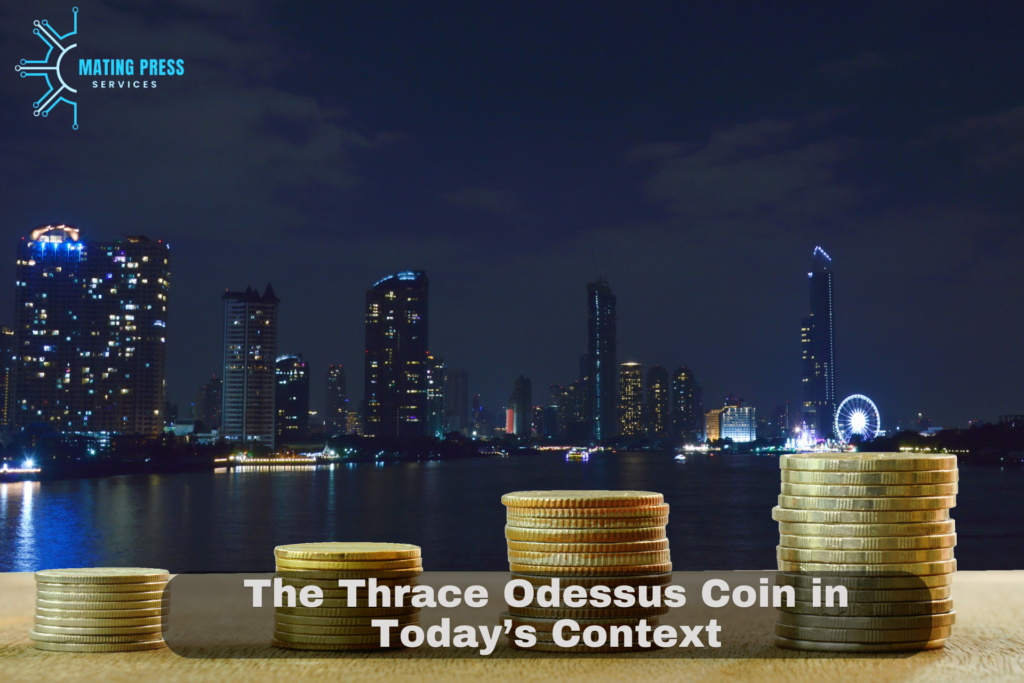
Relevance to Modern Economists and Historians
The Thrace Odessus Coin 16.67g serves not only as a collector’s item but also as an invaluable resource for modern economists and historians studying ancient trade systems and economic structures. Its existence provides concrete evidence of the value placed on standardized currency in ancient societies. By analyzing such coins, researchers can glean insights into trade routes, currency systems, and the economic relationships between cities and nations during antiquity.
Educational Value and Public Interest
Museums and educational institutions have recognized the importance of the Thrace Odessus Coin 16.67g as a teaching tool. Exhibits featuring this coin can help illustrate the complexities of ancient economies, the role of currency in society, and the artistic achievements of the time. By showcasing the coin, educators can engage the public in discussions about the historical context and significance of ancient currencies, enriching our understanding of economic history.
Collecting and Investing in Ancient Coins
For collectors, the Thrace Odessus Coin 16.67g is not just a piece of history but a potential investment. As interest in ancient coins continues to grow, their market value can appreciate significantly over time, making them a compelling addition to any collection. Many collectors find joy in uncovering the stories behind these coins and the civilizations they represent, enhancing their appreciation for ancient history.
Exploring the Thrace Odessus Coin 16.67g: A Window into Ancient Trade Practices
Trade Networks and Cultural Exchange
The Thrace Odessus Coin 16.67g serves as a vital artifact, illuminating the extensive trade networks that connected Odessus with other ancient civilizations. Its use facilitated not only local commerce but also international trade with far-reaching influences from the Mediterranean world. The city’s strategic location along the Black Sea made it a critical node in the exchange of goods, ideas, and cultures. The coin’s consistent weight and recognizable design enabled merchants to conduct transactions with confidence, fostering a dynamic economy.
The Influence of Maritime Trade
Maritime trade significantly influenced the prosperity of Odessus, with the Thrace Odessus Coin 16.67g at the heart of these exchanges. As a bustling port city, Odessus played a pivotal role in the distribution of goods across the Black Sea region, including agricultural products, textiles, and luxury items. This bustling economic activity would not only enrich the city but also promote cultural intermingling, evident in the diverse iconography found on its coins. By analyzing the Thrace Odessus Coin 16.67g, we can trace the interconnectedness of ancient societies and how trade shaped their development.
Numismatic Research and Ongoing Discoveries
Today, numismatic research continues to uncover new insights into the Thrace Odessus Coin 16.67g and its role in ancient economies. Scholars utilize advances in technology, such as non-invasive imaging techniques, to study coins without damaging them. These methods provide detailed information about minting practices, material composition, and even the historical context of the coins. Ongoing discoveries and scholarly discussions contribute to a more comprehensive understanding of ancient Thrace and its remarkable contributions to the world of currency and trade.
FAQs About the Thrace Odessus Coin 16.67g
1. What is the Thrace Odessus Coin 16.67g?
The Thrace Odessus Coin 16.67g is an ancient silver coin minted in the city of Odessus, located in modern-day Bulgaria. It weighs approximately 16.67 grams and features distinctive iconography that reflects the cultural and economic significance of ancient Thrace.
2. What is the historical significance of the Thrace Odessus Coin?
This coin is significant for its role in the trade networks of ancient Thrace, illustrating the economic prosperity of the city of Odessus. It also serves as a testament to the artistic skills of ancient engravers and the cultural exchange between the Thracians and Greeks.
3. What does the design of the coin look like?
The Thrace Odessus Coin 16.67g typically features a depiction of deities or rulers on the obverse side, while the reverse side often showcases Thracian symbols, local animals, or agricultural motifs. These designs reflect the cultural values and identity of Odessus.
4. Why is the weight of 16.67 grams significant?
The weight of 16.67 grams was a standard measure for coins in ancient times, ensuring consistency in trade and facilitating commerce. This standardization helped establish trust among merchants and contributed to the economic stability of the region.
5. How did the Thrace Odessus Coin facilitate trade?
The coin functioned as a reliable medium of exchange in local and regional markets, allowing merchants to conduct transactions involving various goods such as grain, wine, textiles, and metals. Its consistent weight and recognizable design simplified trade processes.
6. What are the main features collectors look for in this coin?
Collectors value the Thrace Odessus Coin 16.67g for its historical context, rarity, and preservation condition. Key features include the clarity of the designs, the integrity of the silver content, and any unique markings that can provide insights into its provenance.
7. Can I buy a Thrace Odessus Coin 16.67g?
Yes, the Thrace Odessus Coin 16.67g can be purchased through various numismatic dealers, auctions, and online platforms. However, due to its historical significance and rarity, it may command a high price depending on its condition and provenance.
Conclusion: The Enduring Legacy of the Thrace Odessus Coin 16.67g
The Thrace Odessus Coin 16.67g is more than a currency; it is a tangible connection to the world of ancient Thrace and the thriving city of Odessus. From its carefully measured weight and silver composition to its intricate designs featuring gods, animals, and symbols of prosperity, the coin reveals the values, beliefs, and artistic achievements of a civilization deeply rooted in both Greek and Thracian heritage.
As a lasting artifact, the Thrace Odessus Coin 16.67g embodies the economic resilience and cultural synthesis that defined ancient Odessus. This remarkable piece continues to captivate collectors and historians alike, offering a window into a time when currency was more than a tool for trade; it was a symbol of identity, tradition, and artistry.






